When it comes to permanent hair extensions, salon owners and stylists know that offering the right type of extension is crucial for meeting your clients’ needs. Whether your client is after volume, length, or a seamless natural look, there are different types of permanent hair extensions to consider. But what sets them apart, and how do you choose the best option? Let’s dive into the different types and what makes each one unique.
There are several types of permanent hair extensions, each designed for different hair types and client needs. Some of the most popular options include tape-in extensions, keratin bond extensions, Weft , and micro beads extensions. Each method varies in application technique, lifespan, and suitability for various hair textures. By understanding these differences, you can offer the best options to your clients, ensuring a perfect fit every time.
Understanding the different types of permanent hair extensions will help you make informed decisions when recommending extensions to clients. From the installation process to the maintenance required, we’ll walk through each option, so you can confidently guide your clients to the best choice for them.
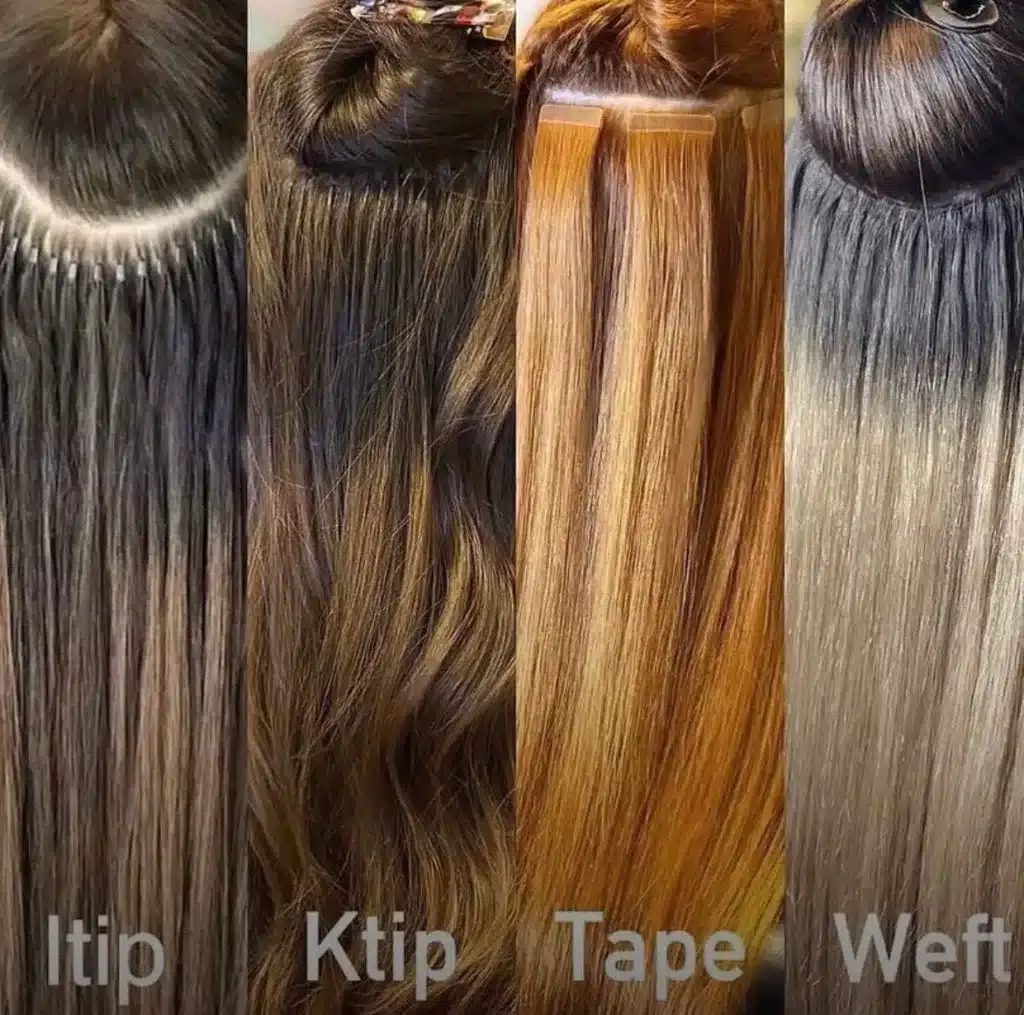
Different Types of Permanent Hair Extensions
As a salon owner or stylist, knowing the ins and outs of each extension type is vital. Clients have different preferences, and your goal is to ensure their experience is both seamless and long-lasting. Let’s break down the different types of permanent hair extensions so you can understand their unique features.
Tape-In Extensions
Tape-in extensions are one of the most popular types of permanent hair extensions. This method involves applying extensions to natural hair using medical-grade adhesive tape. These extensions lie flat against the scalp, making them a great option for clients who want a natural, seamless look.
Benefits:
Quick application: Tape-ins are relatively fast to apply, making them ideal for busy salon schedules.
Natural finish: The extensions lay flat, so they blend seamlessly with natural hair.
Lightweight: Tape-ins are gentle on natural hair, making them suitable for clients with fine or thin hair.
Maintenance:
Tape-ins need to be moved up every 6 to 8 weeks as the natural hair grows. With proper care, they can last up to 1 year.
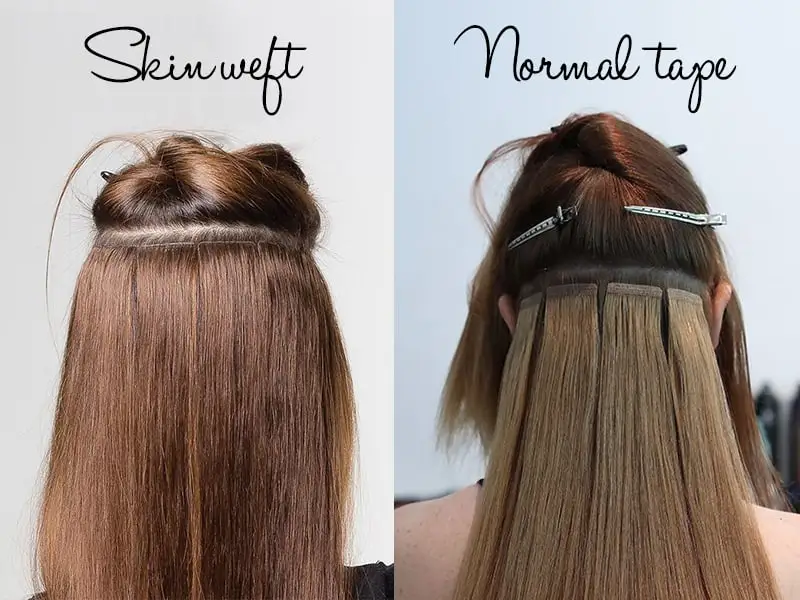
Weft Extensions
Weft Extensions are a newer innovation in the world of permanent hair extensions. These extensions consist of a weft of hair that is applied using a special adhesive or sewing method. The weft lies flat against the scalp, making it a great option for clients who prefer a more discreet and natural result.
Benefits:
Comfortable: The flat design makes these extensions incredibly comfortable, even for clients who have sensitive scalps.
Minimal shedding: Because the weft is made of high-quality hair, there is less shedding over time.
Versatile: Weft can be used to add volume, length, or both.
Maintenance:
Move-up appointments are usually needed every 6-8 weeks. With proper care, these extensions can last for about 1-2 years.
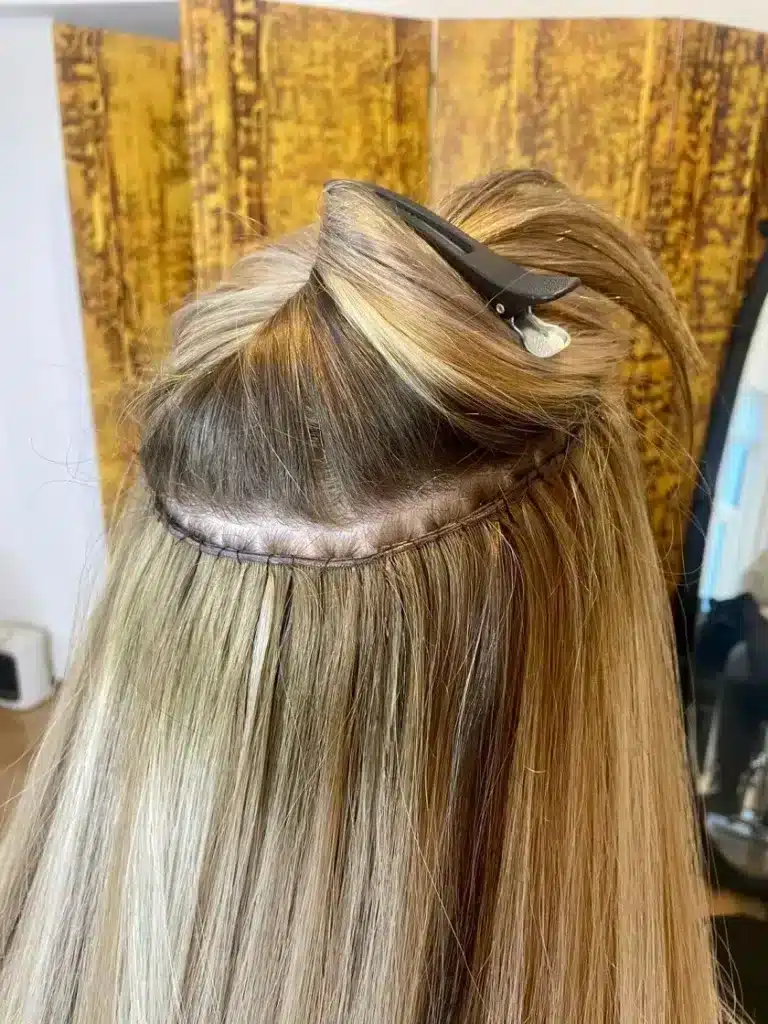
Micro beads Extensions
Micro beads extensions involve attaching small, metal rings to sections of the natural hair, with the extension being pulled through the ring and clamped securely in place. This method doesn’t require any adhesive or heat.
Benefits:
No heat or glue: Ideal for clients who prefer an extension method that avoids any chemicals or heat.
Reusable: Micro beads extensions can be reused several times, making them a cost-effective choice in the long run.
Versatile: Suitable for a variety of hair types and textures.
Maintenance:
The extensions need to be moved up every 2-3 months, depending on the client’s hair growth. With proper care, these extensions can last up to 1 year.
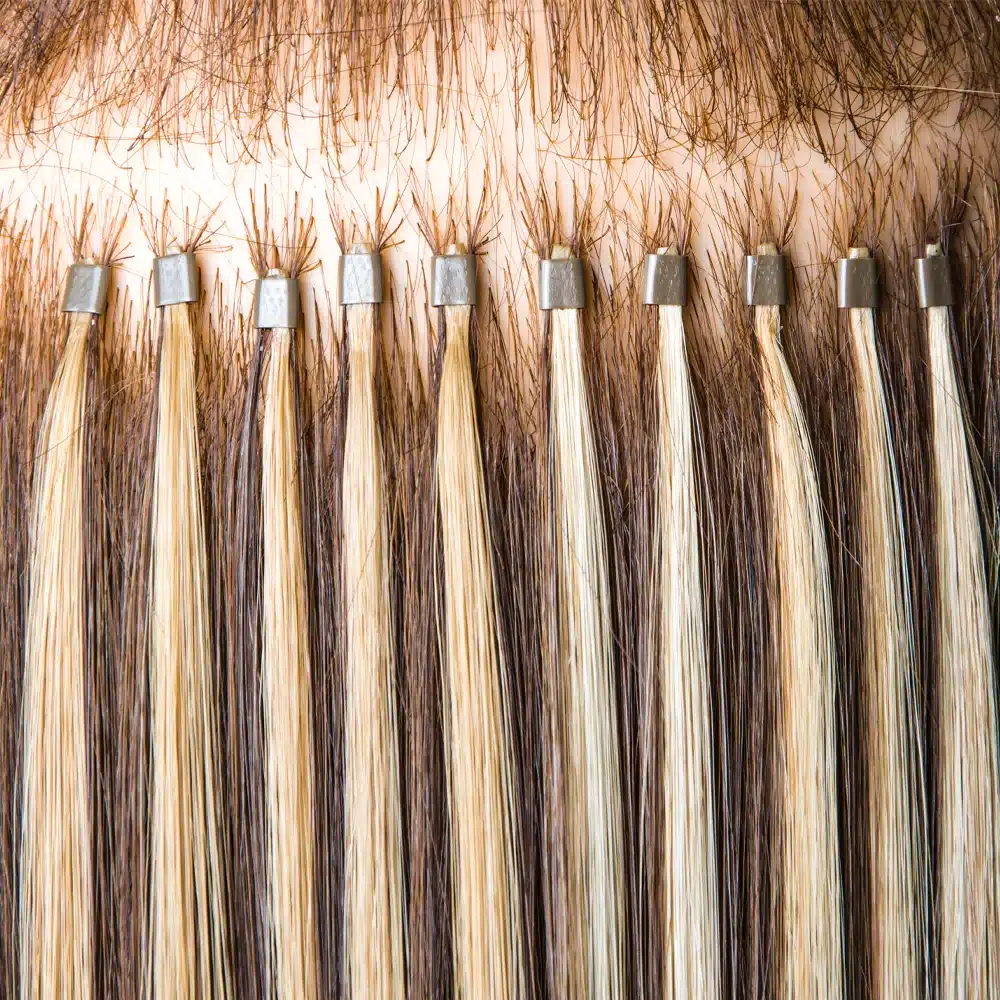
Fusion Hair Extensions
Fusion hair extensions involve the application of individual strands of hair using a keratin-based bond. These are applied using heat to fuse the natural hair to the extension. The fusion method is considered one of the most durable and long-lasting methods available.
Benefits:
Long-lasting: Fusion extensions can last up to 6 months or longer with proper maintenance.
Customizable fit: Like keratin bonds, fusion extensions are applied strand-by-strand, allowing for a tailored look.
Natural movement: Fusion extensions tend to have a more natural feel and movement, as the bonds are small and lightweight.
Maintenance:
Move-ups are required every 4-6 months, depending on hair growth. Fusion hair extensions are high-maintenance but offer a longer-lasting result compared to other options.
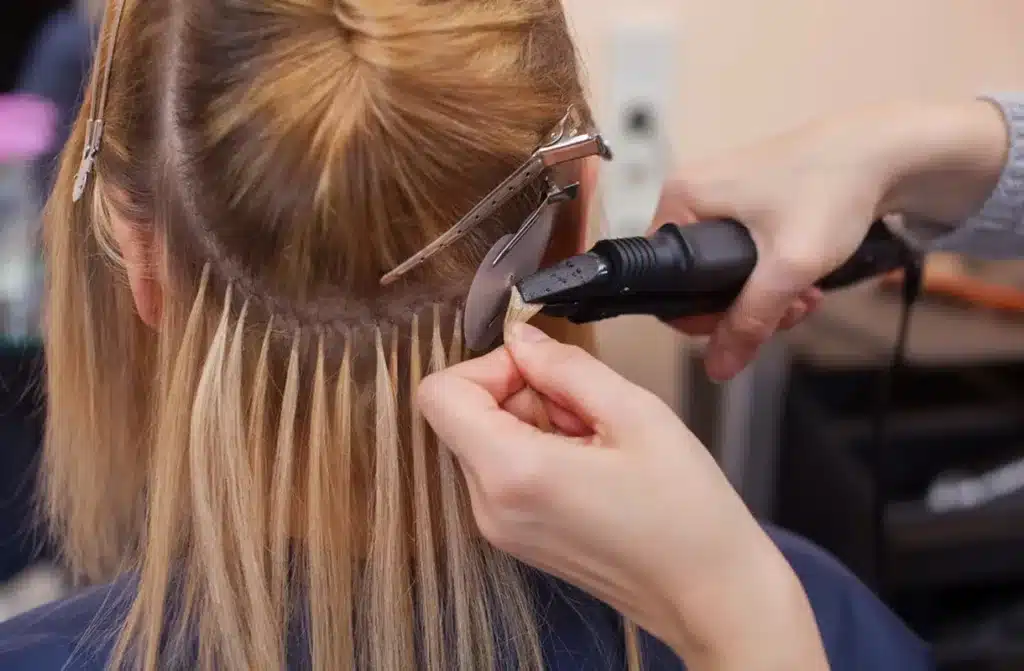
Choosing the Right Type for Your Clients
When choosing between the different types of permanent hair extensions, consider the following:
Client’s lifestyle: Clients with a busy schedule may prefer tape-in extensions or micro beads, as these are quick to apply and require minimal maintenance.
Hair type: For clients with finer hair, tape-ins or Weft might be better options, while clients with thicker or coarser hair might benefit more from keratin bonds or fusion extensions.
Desired look: Some clients might want a natural look with minimal bulk, making Weft the best choice, while others might prefer the fullness and volume that comes with keratin bonds or micro beads.
FAQ on Permanent Hair Extensions
- How long do permanent hair extensions typically last?
The lifespan of permanent hair extensions varies based on the method, hair quality, and how well they are cared for. On average, full cuticle-grade hair extensions can last anywhere from 6 months to 18 months with proper maintenance. For example, tape-ins may last up to 1 year, while fusion hair extensions can last up to 6 months or longer. - Can I style my hair with permanent extensions?
Yes, you can style your hair with permanent extensions just like you would with your natural hair. You can curl, straighten, or even dye your extensions, but it’s essential to follow proper care guidelines to avoid damaging both your natural hair and the extensions. - Are permanent hair extensions safe for my natural hair?
When applied and maintained properly by a professional, permanent hair extensions should not cause damage to your natural hair. It’s important to follow aftercare instructions, such as avoiding excessive heat and regular move-up appointments, to ensure the extensions don’t cause stress on your natural hair. - Can I swim or go to the gym with permanent hair extensions?
Yes, you can swim or exercise with permanent hair extensions, but you should take precautions. It’s recommended to wear your hair in a braid or bun while swimming and wash it thoroughly afterward. In the gym, you should avoid excessive sweating directly on the roots and try to wash your hair regularly to prevent any product buildup. - What is the best type of permanent extension for fine hair?
For fine hair, tape-in extensions or weft extensions are ideal options. These methods are lightweight and create minimal tension on the scalp, preventing damage to finer hair types. Micro bead extensions can also be an option for finer hair, as they don’t require glue or heat. - How do I know if permanent hair extensions are right for me?
Permanent hair extensions are suitable for individuals looking for a longer-term solution to adding volume, length, or a fuller look. If you’re unsure, consult with a professional stylist who can assess your hair type, lifestyle, and desired look to help determine if permanent extensions are a good fit for you. - Do permanent hair extensions require special care?
Yes, permanent hair extensions require specialized care. It’s important to use sulfate-free shampoos, avoid harsh brushing, and follow the stylist’s aftercare instructions for each specific extension method. Regular move-up appointments or maintenance sessions are also necessary to keep the extensions looking natural and to avoid damage to your natural hair. - Can I color my hair while wearing permanent extensions?
You can color your hair while wearing extensions, but it’s important to take precautions. For tape-ins, wefts, and fusion extensions, it’s recommended to color your natural hair while the extensions are in place. However, for methods like micro beads or keratin bonds, it’s generally advised to remove the extensions before dyeing your hair to avoid potential damage to the bonds or beads. - Can I remove permanent hair extensions myself?
While some types of extensions, like micro beads, can be removed at home, it’s always best to have a professional stylist handle the removal. Incorrect removal can damage both your natural hair and the extensions. Many salons offer extension removal services to ensure it’s done safely and without harm. - What is the cost of permanent hair extensions?
The cost of permanent hair extensions varies depending on the method, the quality of the hair, and the amount needed. Generally, prices can range from $600 to $3,000 or more. Factors such as the length, volume, and installation method will influence the overall cost.
Conclusion
As a professional stylist or salon owner, knowing the types of permanent hair extensions and their unique features can help you offer the best recommendations to your clients. Whether your clients are looking for a natural look, longer-lasting extensions, or something in between, there’s an extension method suited to every need. By understanding the pros and cons of each method, you can provide high-quality, lasting results that keep your clients coming back.





